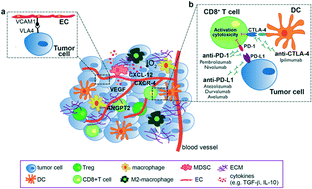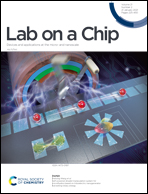Tumor-on-a-chip platforms to study cancer–immune system crosstalk in the era of immunotherapy
Abstract
Immunotherapy is a powerful therapeutic approach able to re-educate the immune system to fight cancer. A key player in this process is the tumor microenvironment (TME), which is a dynamic entity characterized by a complex array of tumor and stromal cells as well as immune cell populations trafficking to the tumor site through the endothelial barrier. Recapitulating these multifaceted dynamics is critical for studying the intimate interactions between cancer and the immune system and to assess the efficacy of emerging immunotherapies, such as immune checkpoint inhibitors (ICIs) and adoptive cell-based products. Microfluidic devices offer a unique technological approach to build tumor-on-a-chip reproducing the multiple layers of complexity of cancer–immune system crosstalk. Here, we seek to review the most important biological and engineering developments of microfluidic platforms for studying cancer–immune system interactions, in both solid and hematological tumors, highlighting the role of the vascular component in immune trafficking. Emphasis is given to image processing and related algorithms for real-time monitoring and quantitative evaluation of the cellular response to microenvironmental dynamic changes. The described approaches represent a valuable tool for preclinical evaluation of immunotherapeutic strategies.

- This article is part of the themed collections: Immunotherapy and Lab on a Chip Recent HOT Articles


 Please wait while we load your content...
Please wait while we load your content...